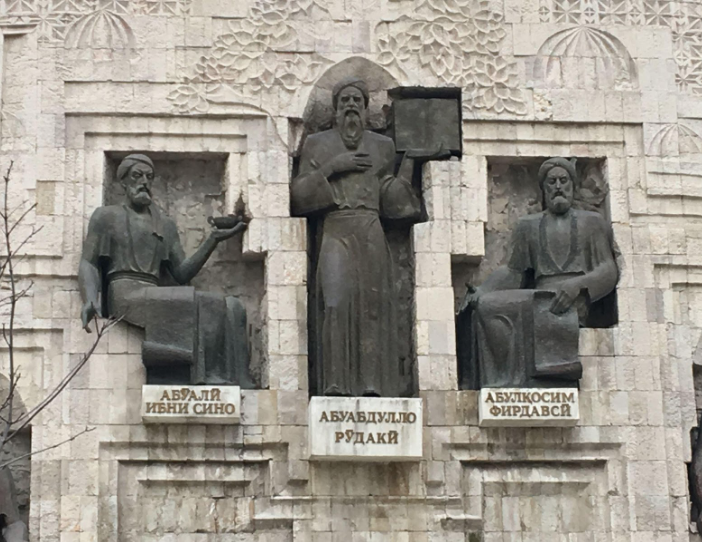An American in Dushanbe: How Studying Persian in Tajikistan Affects U.S. Students’ Language Learning
I remember locking myself in the bathroom the first time I visited Tajikistan. My host parents’ guests asked me questions in rapid-fire Tajiki and expected intelligent responses, despite the fact that I had been studying Farsi for a year (and had come to Tajikistan to improve it). Each time my eyes glazed over with incomprehension, they switched to Russian, my mother tongue — still a lingua franca between myself, a Russian Jew, and Tajiks from Dushanbe — but the gulf between Farsi and Tajiki haunted me. I wanted to understand them, but to avoid embarrassment, I just sat in the bathroom and cried.
But after eight weeks in Tajikistan, I was not only comfortable with the language, but had integrated to such an extent that few knew I was a foreigner. I could speak about the Tajik civil war, learned local slang, and even went to traditional dance classes. But by the time I left Tajikistan, I had learned two languages: the Farsi that she came to learn and the Tajiki that I learned out of necessity.
U.S. Foreign Language Study Abroad Programs and the Case of Persian
The U.S. Department of State has designated foreign language learning, particularly through study abroad programs, as one of its chief priorities. Such programs “open doors in today’s interconnected world… [and advance U.S. interests regarding] national security and economic prosperity.” Due to such factors as traditional foreign language teaching curriculums and preferences, as well as a lack of access to teachers and resources of other languages, 91 percent of U.S. foreign language students study Spanish, French, German, or Italian. Only nine percent of students pursue less commonly taught languages (LCTLs)— even though LCTLs include such major world languages as Arabic, Mandarin Chinese, and Russian.
In order to balance out these language learning disparities and encourage the learning of languages deemed critical to matters of national interest, the U.S. Department of State has helped establish and fund a number of study abroad programs devoted to the study of LCTLs, including the Critical Language Scholarship (CLS), the National Security Language Initiative for Youth (NSLI-Y), and the American Councils for International Education (which largely administer the prior two programs). For the most part, these programs send students to a country based on the following criteria: the target language is widely spoken there, and the United States has vital geopolitical interests for engagement with that country.
One notable exception, however, regards Persian language study. The Persian language is primarily spoken in Iran, Afghanistan, and Tajikistan. Iran and Afghanistan in particular are of vital strategic interest to the United States. It is exceedingly difficult, however, to visit those countries, let alone spend an extended amount of time studying there. The lack of U.S. and Iranian diplomatic ties following the 1979 Iranian revolution has made it nearly impossible for Americans to obtain student visas for Iran, and the hesitancy to do so has been heightened by a number of high-profile detentions, including the 2009-2011 imprisonment of three hikers and the 2017-2020 captivity of Princeton graduate student Wang Xiyue. Meanwhile, widespread terrorist and insurgent activity in Afghanistan have severely limited American students’ ability to travel and study there.
To bypass these obstacles, U.S. study abroad programs send students to Tajikistan to study Persian. The American Councils for International Education webpage for its Tajikistan programs (which includes the NSLI-Y and the CLS) states, “60+ American students and seasonal staff …[spend the summer] in Dushanbe.” Persian is not the only example of this phenomenon. For example, U.S. study abroad programs for Turkish language learners prefer to send students to Azerbaijan rather than to Turkey due to growing security concerns in the country.
The Linguistic and Cultural Challenges of Studying Persian in Tajikistan
But how does studying in Tajikistan affect students’ perceptions of the Persian language, as well as their attitudes towards predominantly Persian-speaking countries as a whole? The Tajik dialect of Persian (i.e., Tajiki) is markedly different from its Farsi and Dari counterparts, spoken in Iran and Afghanistan, respectively, being written in Cyrillic and containing certain archaic vocabulary terms, pronunciation patterns, and grammatical features. This can prove disorienting, as students are limited to using the Perso-Arabic script in the classroom and can never truly practice it “on the ground.” Further, Russian and Uzbek have left their linguistic mark on Tajik, from loanwords to grammatical structures, some of them artificially imposed by the Soviet government. Students must pursue a difficult balancing act to ensure that they know enough Tajiki to get by in day-to-day life while allocating sufficient time and energy to learn the more standardized Persian that will give them a leg up with Farsi, Dari, and literary Tajiki. One of the authors of this article remembers her mental exhaustion during CLS, as she had to learn both literary Farsi and Tajiki in class — and then tried to absorb conversational Tajiki, which seemed to be a completely different language, in conversations with her host family!
Tajikistan’s complex cultural identity may profoundly impact American students’ views on how Persian-speaking countries relate to the wider world. In Dushanbe, for example, students can see statues of Persianate literary greats, the Soviet-build memorial park to the Second World War, and Central Asian friendship displays while walking through the streets of the city. Conversations with Tajiks also offer clues as to how some citizens feel about the mosaic of cultural influences that have shaped their country. Tajik schoolchildren often memorize the same poems, for example, that Iranians memorize — Saadi, Hafez, or Omar Khayam, for example. By the same token, they memorize Pushkin poems in the Russian classes that nearly all of them take. American students’ exposure to Tajikistan’s rich heritage may expand the scope of their research interests. One of the authors of this article became more interested in Central Asia and the former Soviet Union, as opposed to Iran and Afghanistan, after finishing her program in Tajikistan– which was not likely to be the government’s main intention in sending students abroad.
Studying Persian in Tajikistan: A Final Verdict
Despite the limitations of the U.S. designating Tajikistan as the primary destination for Persian language study, these programs remain an effective tool in preparation of future government professionals — and their prestige goes almost without saying. On one hand, Persian-speaking students who have studied in Tajikistan will still have to undergo additional career training, especially if they want to specialize in Iran and Afghanistan.
On the other hand, the advantages of studying in Tajikistan should not be dismissed: Tajikistan remains the safest option for American students to gain an immersive experience in Persian — and speaking in Tajiki, in spite of its differences with Farsi and Dari, serves as a solid base for learning Persian. Living and studying in Central Asia can also broaden students’ horizons in terms of their regional interests, and the U.S. Department of State can potentially have experts in two regions for the price of one. Studying in Tajikistan shows how dynamic the Persian-speaking world is, and it serves as a launchpad for American students to pursue a wealth of language, cultural, and research opportunities.
Leora Eisenberg is a current Ph.D. student in Russian and East European History at Harvard University. She is particularly interested in Central Asian Soviet language and nationality policy. Leora is a proud alumna of CLS Tajikistan (2017) and tries to return every summer.
Marin Ekstrom is a researcher involved with the Eurasian Research and Analysis Institute and its affiliated Central Asia Watch project. She graduated from Central European University with an M.A. in International Relations. Marin’s research interests include Russia’s ambitions in the Asia-Pacific region, Eurasian integration, foreign policy analysis, and cultural rights.
Assiya Yermukhametova is a Doctoral candidate in International Relations at Central European University in Vienna, Austria. Her current research interests are development finance, the effects of globalization, and ontological security.




